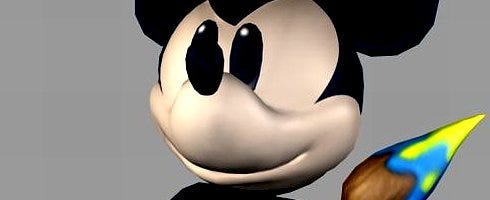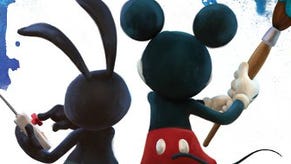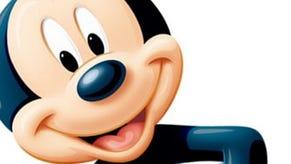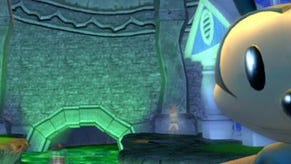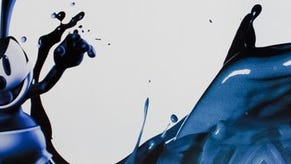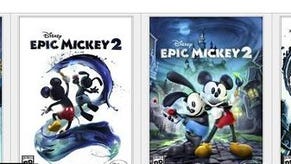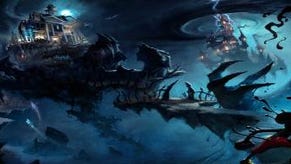Epic Mickey: Gameplay details from London Event
During the London Event for Epic Mickey, Warren Spector took the stage to chat a bit about gameplay details along with the history of the antagonist, Oswald the Lucky Rabbit.
After inadvertently destroying the magical land the sorcerer created, Mickey is pulled from home, kidnapped, and dropped off in the Cartoon Wasteland he created where he must figure out where he is and how to harness the abilities he has acquired.
There, he rediscovers Oswald along with other things and cartoons he knew back in the 30s and his main goal is to make the Wasteland better since he destroyed it, all the while trying to get back home.
The Wasteland is a place where Disney's forgotten and rejected ideas go. It's full of rides, people and places that want to be remembered. There's the Gremlin Village based off an old ride at Disney World, along with 2D platformer segments inspired by classic cartoons like Clock Cleaners and the Lonesome Manor, which is reminiscent of the Haunted Mansion.
Gameplay has you wielding magical paint and thinner to re-shape the world, both of which give you creative or damaging effects, with the dynamic choices you make consequentially affect the environment, interactions with other characters, and Mickey’s appearance and abilities.
The game is being described as a "platformer meets RPG/adventure" with paint and thinner mechanics where everything is sketched and painted. As an example, if a bookshelf of flying books is blocking your way, you can just erase it - but you can't use it as a platform or gain information unless you repaint it.
There's loads more past the break.
Depending on how you play will effect the game's landscape and how characters interact with you, and Spector promises that every player will be able to describe a unique experience.
You can become what's being called a 'Scrapper' or a Hero. Scrappers will be more powerful, but with less friends, where as the Hero bit is self-explanatory.
"In this game, you can get around and not fight a boss," said Spector. "That sounds crazy, but everyone wants something, and you can figure out how to not fight a boss."
Bad guys are called "Spatters" and they are your typical minions. However, you can make them friendly, or distract them by interacting with them in all sorts of ways. Old enemies like Black-Eyed Pete are there as well.
Oswald's kids love Mickey, and you should let his children hang out with the Spatters as the young ones can eat them. Another enemy type is the Beetleworx, which are robot-like and immune to paint and thinner mechanics. Gremlins are also present, and are there to help you, but at a cost.
“The core of this game is the idea of choice and consequence, and how that defines both the character and the player,” said Spector. “By putting the mischievous Mickey in an unfamiliar place and asking him to make choices – to help other cartoon characters or choose his own path – the game forces players to deal with the consequences of their actions. Ultimately, players must ask themselves, ‘What kind of hero am I?’ Each player will come up with a different answer.”
Oswald the Lucky Rabbit’s role as the antagonist in the game stems from the character created by Walt Disney for 26 silent cartoons between 1927 and 1928. These cartoons were contracted by Charles Mintz, with Universal for distribution. Oswald was primed to be Walt’s first animated star, but because Walt needed more money for production costs, a deal could not be reached resulting in Walt loosing the rights to Oswald and much of his staff. Thus, Walt and his animator, Ub Iwerks, created Mickey Mouse.
According to the liveblog of the event by 1UP, Disney Interactive Studios wanted to make a new Mickey game, but since previous games featuring him were flops - with the exception of Kingdom Hearts - Mickey was shelved until a game worthy of his iconic nature could be created.
"One of our creative problems was Mickey Mouse," said Disney executive Graham Hopper at the event. "Disney's Think Tank killed all development of Mickey Mouse games until they could address the problem of how he has bad games despite being such a world-recognized icon.
"So the Think Tank started looking at the roots of Mickey, and stumbled upon Oswald the Rabbit and talked a bit about Oswald and Mickey to Disney's CEO Bob Iger. Since Universal, not Disney, still owned Oswald, Bob made sure to secure Oswald for the game."
"Mickey is most recognized as an icon on a watch or t-shirt, but not as a character in narrative," added Spector. "So we had to make Mickey cool again. I want to remind people that Mickey can be funny, not just your favorite uncle or a guy acting like Pluto once in a while.
"Discovering his essence is important to me."
Full liveblog is through here.
